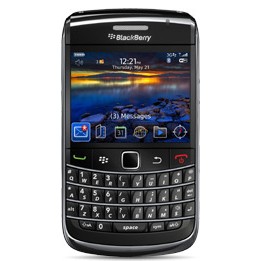| Better Tools for BlackBerry developers |
| Written by Mike James |
| Monday, 12 April 2010 |
|
With so much fuss about iPhone Apps it's time that BackBerry provided the serious programmer with a real alternative. A new range of tools aims to make the job of BackBerry development easy and innovative.
RIM has updated their tools to enable developers to build applications for the BackBerry range of phones. Given the fact that the iPhone is stealing all of the glory with more apps than you could possibly want this seems like a good idea. Mobile phone makers need to get programmers on their team and providing good tools is one very sensible way of doing the job.
A BlackBerry app can be as simple as a custom web page but to really do the job properly you need to work in Java and the updated v1.1 Java Plug-In for Eclipse integrates writing code and running it on one of the phone simulators.
New is the ability to load and run a modified application without having to reset the simulator which speeds things up a lot. You can also now target multiple phone models in a single workspace. Overall it is also claimed that the new plug-in integrates with Eclipse in a more natural way, offering the features that an experienced Eclipse programmer would expect such as refactoring, multiple source folders and so on.
Also included with the plug-in is an updated SDK v5.0 which extends what you can do with the built-in hardware in most BlackBerry models. For example, OpenGL ES has support for 3D graphics, touch-screen, and accelerometer. You can now use multimedia including camera zoom and focus during video capture. A range of new UI components includes spin-box fields, file pickers, and screen transitions. Database improvements include SQLite support for data sharing across different applications, as well as Gears JavaScript API for persistent database storage. Joining the growing trend to geographic apps the SDK offers access to location APIs which enable cell-site geolocation, GPS, geocoding and reverse geocoding to obtain address and location information
If you don't want to work with either a full Java application or a Widget then you can simply create web pages targeting the device via its built-in browser. The Web Plug-in lets you create, debug and package pages that include Widgetsm HTML, CSS and Javascript . There is a version of the plug-in for both Eclipse and Microsoft Visual Studio and you can now debug and profile Widgets and “hot swap” simulators to speed testing.
All of the development software is free to download but you do have to register first.
More info and downloads: www.blackberry.com/developers. <ASIN:1430272252> <ASIN:0321647424> <ASIN:0764589539> <ASIN:1430226560> |
| Last Updated ( Sunday, 02 May 2010 ) |
